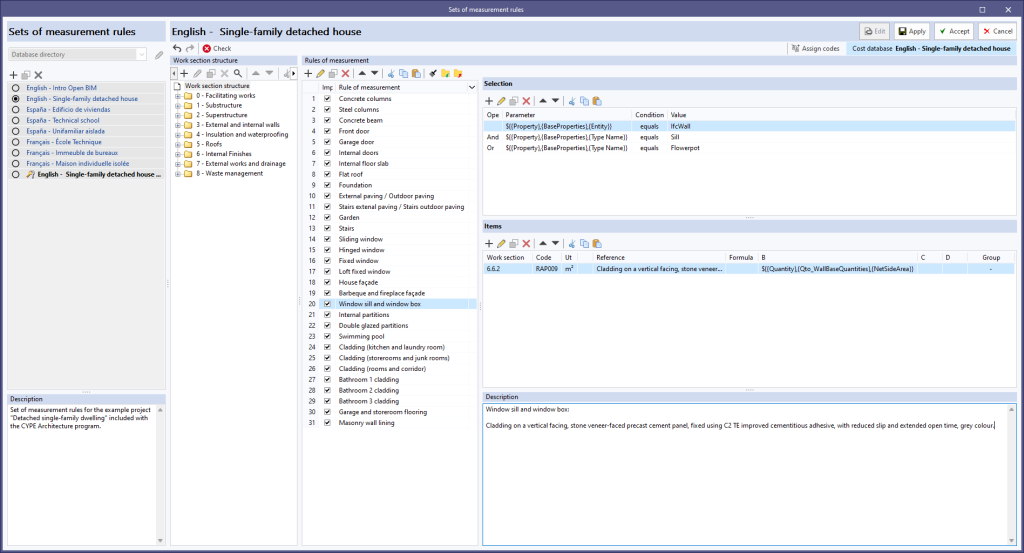In Open BIM Quantities version 2025.c, a new field called "Description" has been added to the edit window of a "Set of measurement rules". This additional field is used to provide more extensive and specific details about the content, purpose or use of each measurement rule.
With this new feature, users can add relevant contextual information that is not limited by the name field, which can be shorter and less descriptive. The inclusion of this field makes it easier to understand and manage rules of measurement, especially in complex projects with multiple rules. Now, the specifics of each rule can be more fully documented, improving communication between team members and reducing the risk of errors or misunderstandings. This improvement also helps to standardise measurement practices and maintain a more organised and consistent database.


